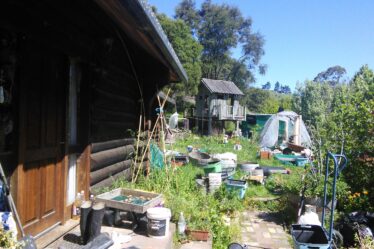Our first view of Mount Cook National Park came as we rounded a corner in the road. A large turquoise blue lake emerged on our right, mirroring the small mountain range beside it. Up ahead, a brilliantly white jagged outline marked our destination. What we had first assumed to be Mount Cook, actually turned out to be neighbouring Mount Sefton. Still mightily impressive but not quite the 3724 m that was the largest mountain in New Zealand.
It was right near the base of Mount Sefton that we were to be camping. A camp ground/car park, that became a beacon for campervans as the sun went down. The touristy hubbub was easy to forgive however, as we sat at our camp spot gazing up at the glacial summit of Mount Sefton.
After lunch we had a short walk to Kea Point, where it was possible to view two glaciers, several summits and a glacial valley. All this within twenty minutes walk of the campsite! Well, not including the ten minutes it took us to find the path…
From the viewpoint we were able to see Mount Wakefield, Mount Sefton and the lowest peak of Mount Cook (we discovered it has three peaks). We were also witness to small avalanches on Mount Sefton, apparently a common affair, the tumble of ice and rock resonating through the valley around us.
A longer than anticipated walk to Mount Cook Village that evening was rewarded with a spectacular dinner view. The windows in the place we had chosen to eat providing a floor to ceiling portrait view of the mountain range.

The following morning after one last longing look at Mount Sefton and a quick photo opportunity involving a small family of ducks and a puddle, we drove a short distance to view yet another glacier, more mountains and another glacial valley. A sightseeing experience sounding repetitive and tiresome on paper, but quite to the contrary in reality. Each glacier, valley and mountain view being quite individual from the previous. The snippets of information on boards provided by the Department of Conservation helped to create history and meaning to the vistas before us.

From here we went east to Tekapo, a small village situated on the edge of its namesake lake. After a pleasant afternoon enjoying coffee, sunshine and a peruse in the couple of shops on offer, we headed down the road to our campsite. Driving right past on our initial attempt, ten minutes of driving down a gravel road to nowhere had us doubting our direction and we eventually turned around, finding the campsite a little way back on our right.
The area was not much to look at on first arrival, the grass looking shrivelled and sparse, along with a few caravans that looked like they could be older than the trees. But we found a slightly greener spot along the back fence, keeping our distance from the lake and hopefully, the insects.
We soon found charm in the worn out place. The lake attracting many species of birds, busying about as we sat and watched. A short walk found countless lupins, another lake and many more caravans with character.
We returned to our lake as the sun set, watching as orange, pink and then purple reflected on the surface. I viewed with interest the man who had come to collect our camp fees, now rowing toward the far side. He was not making his way across the water as I had initially thought, instead he stopped halfway, giving himself prime view of the setting sun and blissful serenity to enjoy it.

We whiled away the rest of the evening playing Ludo (also known as Frustration, the reason becoming apparent as you play), until dad threw the die down a gap between the seats. Not, he says, on purpose… a quick photograph of the board so we could continue at a later date and we decided now was a good time to step out to see the night sky.
Tekapo is well known for its amazing starlight and with good reason. Free from light pollution and beautifully clear, we had one of the best views of the space above either of us had ever seen. Able to identify only the Southern Cross and Orion, we spent time after that just gazing as the stars glistened back at us, the occasional satellite passing through our vision.
An amazingly special moment to share, I knew I would never look at the stars again without remembering that night I stood side by side with my dad, necks craned upwards, as nature took our breath away.



